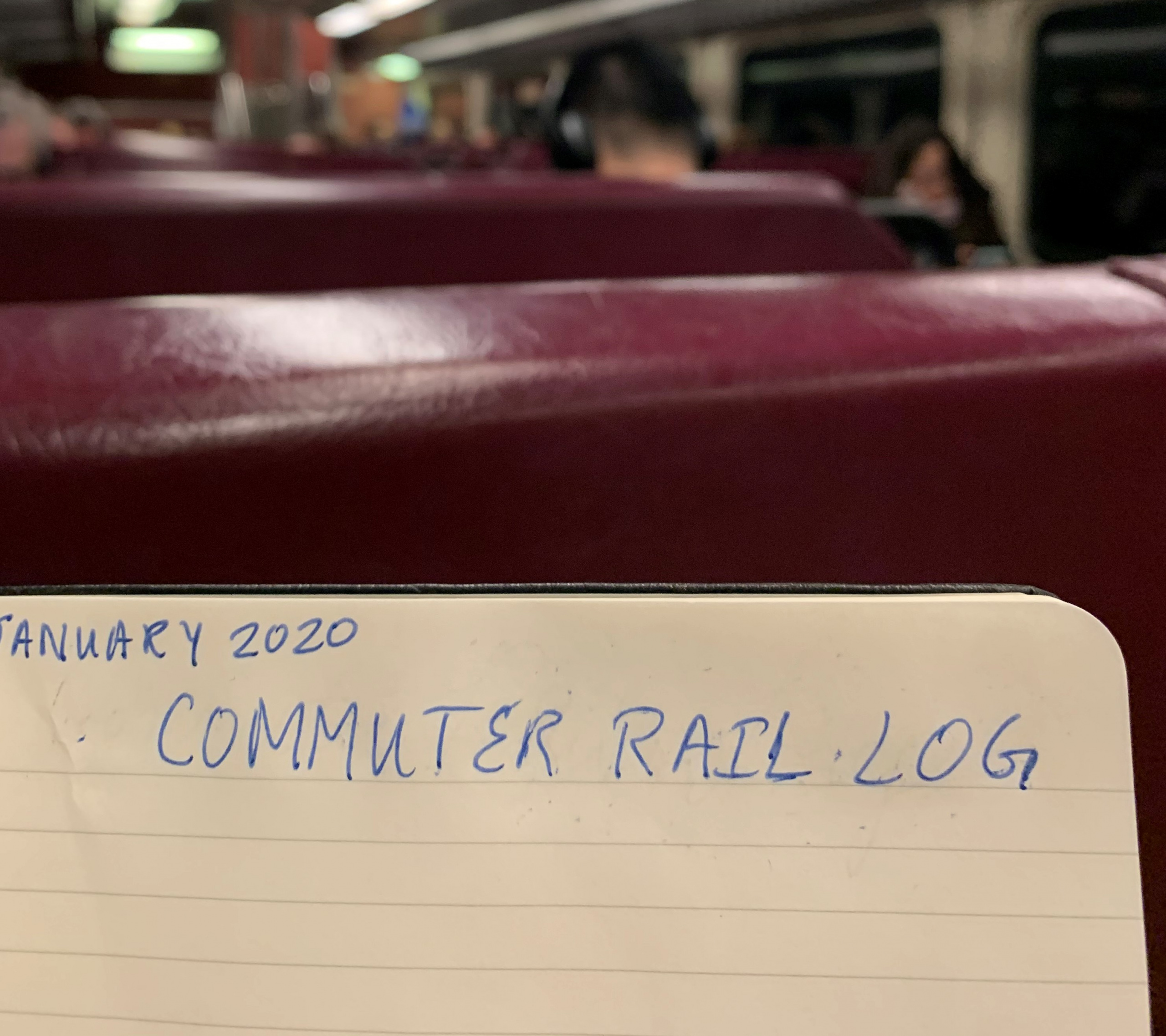Tales from the Rails: On the MBTA’s “Nice” Train
In our transition toward a carbon free society we need to make public transit as appealing as possible. But a week long log of riding Boston’s “nice” train - the commuter rail - suggests that we have a long way to go.

Hannah Scholl is a Frontier Group intern.
This is not another exposé about the Orange Line. Or the Red Line. Or the Green Line (whence I ended up once walking almost an hour the rest of the way to work after it broke down).
No, I’m talking about the commuter rail.
Last month, coming home from the second day of my internship, I left Frontier Group’s Boston office at around 5:30 p.m. and got home after 8 p.m., due to a signal issue that caused the train to halt for an hour and a half between stations. Sitting wedged between two commuters, I felt thankful not to be stuck in the solid mass of people standing, many of whom had just stood up to get off at the next announced stop only to find they had walked into a pedestrian blockade and had no seat to return to.
It could have been worse. I’m not planning to walk around with an “I survived the commuter rail delay” button. And I’ll admit, being stopped for almost two hours was a little unusual. But the rest of the log I’ve been keeping below is in fact completely unremarkable and repetitive. There is unfortunately nothing out of the ordinary about it, which is what makes it so important.
First Week of Work Commuter Rail Log (No snow at all)
DAY 1: Train to South Station was delayed a few minutes. Train to Wellesley (Worcester/Framingham) was on time leaving South Station.
DAY 2: Train to South Station was delayed about 20 minutes, carrying two train’s worth of passengers. The train home was on time, but then stopped on the tracks for 1 ½ hours due to a signal delay.
DAY 3: Train in was delayed 12 minutes. Train to Wellesley was first delayed 10 minutes. After I sat down, they made a last minute announcement that the train was switching to track 5. We were on track 1 and I barely made it before the train left.
DAY 4: Train to South Station was delayed for about 10 minutes. Train back was on time, but arrived several minutes after schedule.
DAY 5: Train to South station was about 10 minutes delayed. Train back to Wellesley was on time.
Day 6, the next Monday, started off with the morning train delayed 20 minutes due to a mechanical issue. The rest of the week looked just like the last- some trains on time, some delayed (although thankfully not for 2 hours).
Boston has been ranked the third best city in the U.S. for public transportation. But many people already think of the T as a disaster (see After the Red Line Derailment, Can the T Get Back on Track?). And let’s face it, if the commuter rail – the ‘good’, more expensive transit option with its frequent delays and commuters occasionally stuck on the train for hours really is the cream of the crop, it’s not going to entice more potential riders. Research by the University of California, Berkeley showed that inconsistent service is a major factor in why people decide not to use public transit.
According to the MBTA, about 90% of its trains ran on time in the past month, with certain days dipping as low as 83%. Let’s remember that people who drive to work are delayed all the time in rush hour traffic, so a little delay is not a disaster that people are unused to. (The biggest incentive for taking the train for many people is actually the escape from traffic.) But trains are expected to get where they’re going on time. Commuter rail delays disincentivize those behind the wheel from considering the public transit option. There have been times when I nearly opted to call a ride service coming home from work on days when I knew I had to be somewhere at a certain time, in fear that I would be stuck on one of the 10% of trains experiencing delays, given my previous experience of taking a delayed train every day for a week.
The quality of our public transit affects not only commuters, but also the health of the population and environment as a whole (See Public Transit Misery is Bad for the Environment). If we’re going to avert massive disruption from climate change, we have to clean up the transportation sector, and one key to that is public transit. For example, an average car ride emits about four times more greenhouse gases than a ride on the commuter rail, per passenger mile. The commuter rail’s emissions can be further reduced through electrification, and a “resolution” the MBTA recently released reflects discussions of making such improvements through decarbonization and increasing productivity. While the MBTA estimated it would take about 2-4 years to acquire electric trains, Governor Baker opined it could take 15-20 years or more.
However long it takes (and shorter is infinitely better), while we transition to an electric rail system, we cannot let our current system atrophy. It is imperative that we focus on what needs to be improved within our current transit system, in order to address the challenges that lie ahead.
While I was stuck for hours on the train, announcements were repeatedly made every ten minutes that the problem would be fixed soon – hopefully in the next ten minutes. Public transit cannot be the problem that we keep pushing back ten more minutes to address. Because those ten more minutes may eventually just turn into ten more years.
Image by the author
Authors
Hannah Scholl
Intern
